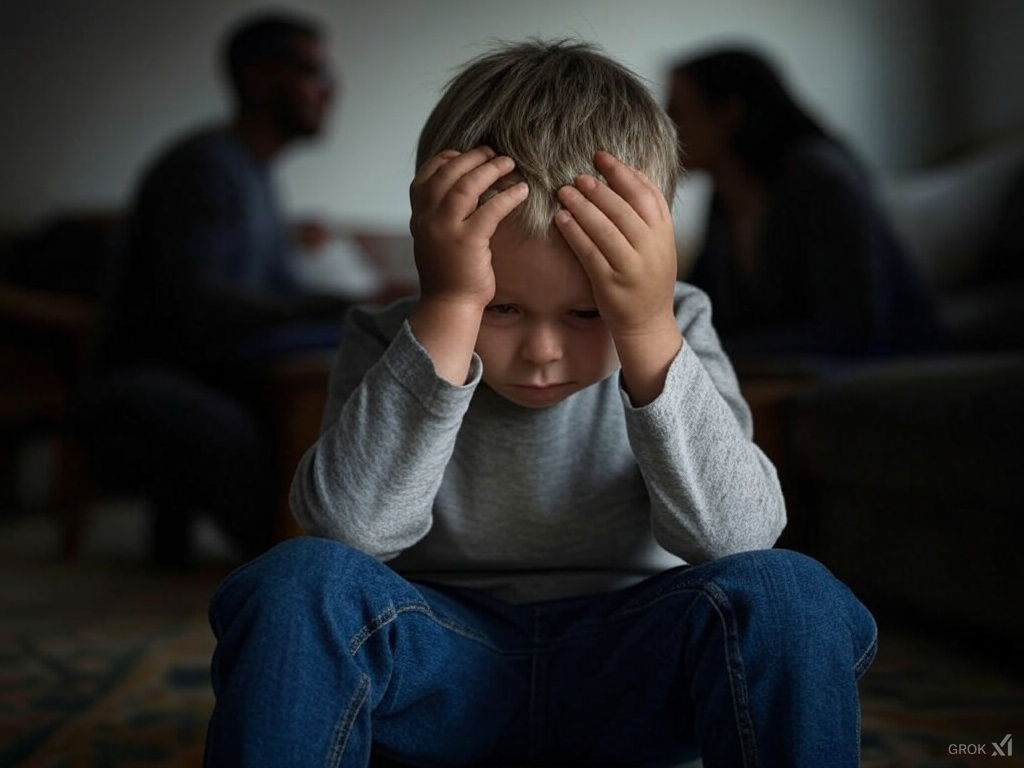
Understanding Childhood Trauma
Childhood trauma is a profound and lasting impact of early experiences where a child’s emotional, psychological, or physical needs were not adequately met. Whether through direct abuse—emotional, physical, or neglect—or through environments that failed to provide stability, safety, and attunement, these early wounds shape how individuals perceive themselves and the world. Unmet needs during crucial developmental years can disrupt a person’s sense of security and self-worth, influencing relationships, emotional regulation, and overall well-being into adulthood.
One key framework for understanding childhood trauma is attachment theory, which describes how early interactions with caregivers shape our ability to form and maintain relationships. Secure attachment, where a child feels consistently supported, fosters confidence and emotional stability. In contrast, insecure attachment—whether anxious (fearful of abandonment), avoidant (emotionally distant), or disorganized (a mix of both)—can create deep-seated struggles in adulthood. Recognizing these patterns is crucial for understanding how trauma manifests across different areas of life.
Before we explore the specific signs of childhood trauma, it's important to recognize that its impact does not always present in obvious ways. While some individuals may have clear memories of difficult experiences, others may only notice the effects through recurring patterns in their emotions, relationships, and daily functioning. The lasting imprint of childhood trauma often manifests in both psychological and physical ways, influencing behavior and perception long into adulthood.
These signs can serve as an indication that unresolved childhood trauma may be playing a role in your current experiences.
Signs and Impact of Childhood Trauma
1. Difficulty in Relationships
Childhood trauma often leads to trust issues, fears of abandonment, rejection, or not being good enough. When feeling vulnerable, some push people away, while others cling tightly, deriving their sense of identity and meaning from relationships. This survival-driven approach can manifest as self-sabotaging behaviors, difficulty with boundaries, or an underlying assumption that relationships are inherently unsafe. Attachment wounds from childhood often replay in adult relationships, leading to patterns of anxious or avoidant attachment styles.
2. Emotional Dysregulation
Many who experience childhood trauma struggle to navigate their emotions, either suppressing them or expressing them explosively. Without early guidance on handling emotions, reactions may become extreme—overreacting to minor triggers, shutting down, or numbing out. Emotional impulsivity, overstimulation, or chronic resentment may develop. For some, anger was modeled through yelling or rage, making it the default response. A simple incident, such as being cut off in traffic, can trigger deep-seated wounds about respect and boundaries, amplifying reactions far beyond the present moment.
3. Chronic Stress & Hypervigilance
Survivors of childhood trauma often experience persistent hypervigilance, constantly scanning for danger—even when safe. The body and brain remain flooded with stress hormones, reinforcing a fight-or-flight state. This chronic stress has long-term health consequences, contributing to anxiety, overanalyzing people’s behaviors, people-pleasing, and being easily startled. The Adverse Childhood Experiences (ACE) study links childhood trauma to chronic illness, highlighting the body’s prolonged exposure to stress chemicals.
4. Low Self-Esteem & Inner Critic
A harsh inner critic often develops in response to childhood trauma. Many struggle with perfectionism, believing that being flawless is the only way to earn love and acceptance. This same critical lens is often turned outward, leading to judgment of others. Feelings of shame, unworthiness, and self-doubt persist, making external validation feel temporary or undeserved. Even with achievements, there’s an underlying question: Am I really good enough?
5. Difficulty with Memory & Focus
Trauma can affect memory formation and recall. Some may struggle to remember childhood events, while others have difficulty concentrating on tasks due to the brain’s adaptation to survival mode. This can lead to issues with cognitive management, making it challenging to stay present, organized, or engaged in daily life.
6. Difficulty Sleeping
Many trauma survivors either struggle with sleep (due to insomnia, nightmares, or feeling unsafe) or use sleep as an escape from stress. Sleep disturbances often stem from early experiences of hypervigilance—monitoring the home environment for potential danger. The bedroom itself may hold associations with past distress, further complicating the ability to rest.
7. Chronic Illness & Physical Symptoms
Long-term exposure to trauma-related stress chemicals can contribute to chronic pain, autoimmune disorders, and conditions like high blood pressure, diabetes, and heart disease. Risk-taking behaviors—such as substance use or reckless actions—may also lead to physical consequences. The body remembers trauma, often manifesting distress through illness.
8. Self-Sabotage & Risky Behaviors
Unresolved trauma can lead to self-sabotaging patterns, such as substance misuse, self-harm, or reckless decision-making. These behaviors often serve as coping mechanisms, offering temporary relief but reinforcing deeper wounds.
9. Avoidance & Isolation
Many trauma survivors withdraw from social interactions, preferring isolation as a means of protection. Avoiding people and situations feels safer than facing potential harm. While this can be a survival strategy, it often reinforces loneliness and prevents meaningful healing.
Healing and Resilience
While childhood trauma leaves lasting imprints, healing is possible. Many survivors develop deep empathy, resilience, and emotional intelligence through their journey. Recognizing trauma’s effects is the first step toward transformation. With self-awareness, therapeutic support, and intentional healing practices, individuals can rewrite their narratives, shifting from survival to thriving. Healing does not mean erasing the past but rather integrating it with self-compassion and strength, reclaiming agency over one’s life.
Written by Sergio Nikita Lialin
Sergio is a psychedelic preparation, guidance, and integration coach with over 30 years of experience. His highly unique approach blends the ancient wisdom of indigenous cultures of Latin America, where he studied extensively, with Western training in integrative medicine and psychology.
Bridging traditional guidance with neuro-linguistic programming (NLP) and modern psychology, he has developed a proprietary and transformative coaching style. As a lifelong healer, artist, and spiritual counselor, he has compassionately guided individuals and couples toward healing and fulfillment, drawing inspiration from his mentorships in Mexico, Peru, Brazil, and Colombia.
He is currently mentoring mental health professionals in psychedelic-assisted therapy.
He can be reached at PsychedelicTherapyMentor@Proton.me